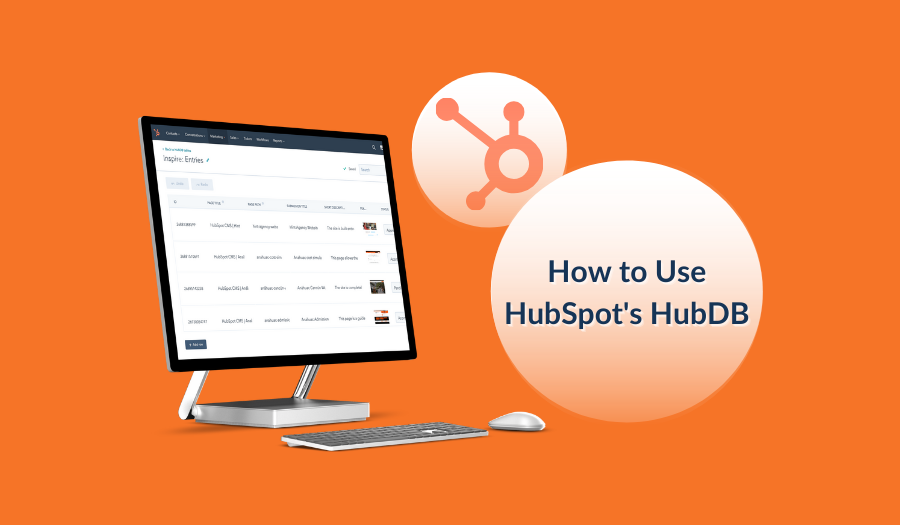
What is HubDB?
HubDB is a relational database that allows users to enter and store data in tables consisting of rows and columns (like a spreadsheet). Often, IT staff must build and maintain databases; however, HubDB is seamlessly integrated into the HubSpot platform,* allowing for easy access and editability. HubDB table cells (also known as data points) can be easily accessed either through an API or directly into HubSpot page content through its coding language, HubL.
*Note: HubDB is available only with purchase of HubSpot’s CMS Hub at Professional or Enterprise level or the Marketing Hub at Enterprise level.
Benefits & Features of HubDB
One of the primary benefits of HubDB is its ability to maintain associations between large amounts of data. As mentioned above, HubDB is a relational data store, meaning it allows users to define relationships and share data across multiple tables. This data can then be populated and used in custom implementation or dynamic page content.
The ability to create dynamic pages is one of the primary features of HubDB and can serve as a powerful alternative to the labor-intensive task of manually building pages through the content editor. Every HubDB table has the functionality to dynamically create individual pages based on the table’s row data as well as an overarching listing page, which typically serves as a pillar page that links to these row-generated pages. HubDB also allows you to create multilevel dynamic pages, connecting multiple tables to create page structures that are three or more levels deep.
HubDB in Action
While HubDB is undoubtedly a powerful tool, how it’s used and implemented is important. Below are some ways HubDB can help create pages that presenting clean and organized data:
- Team or careers page(s)
- Product listing
- Resource center
- Searchable directory
- Custom components or multi-step form
Team/Career Listing
Most team or careers pages consist of a top-level listing page that allows users to click to view individual staff member information or job posting details. While it’s possible to build this content structure through the CMS page content editor, manually creating a page for every single team member or every job posting would require a hefty time commitment. With a single HubDB table, however, the user could enter each team member or job post as a row and then either pull the data into an on-page lightbox or use the dynamic page creation functionality to generate individual pages. In addition to saving time, this method keeps a clear relationship between individual staff members or job posting data and their overarching listing page content.
Resource Center/Product Listing
This same process could be used to create product pages or resource items that all fall under a single overarching listing page (e.g., a shopping page or resource center). In addition to dynamic page generation, the relationships established through the data tables allow for extensive classification and advanced filtering. With HubDB, a user could simply create a column of select category options or even pull in options from a separate HubDB table by using the Foreign ID column type to create complex relationships.
Searchable Directory
This process can similarly be used to create a searchable directory. While it may not be necessary to use dynamic pages, the HubDB database will still serve as the central source of truth that populates directory options.
Custom Components
Sometimes, you won’t need HubDB to display large amounts of content or populate entire website pages. You can also use it to simply store data point options used by custom site components. These can include interactive selections or multi-step forms. While these typically require more advanced logic and web development knowledge, they can be extremely beneficial to promote lead generation and user interaction across your site.
Getting Started
While the examples above are just a handful of practical use cases, there are numerous alternative opportunities to leverage HubDB for custom projects. When deciding whether HubDB is the right choice, it’s always best to take a step back and map out the full functionality of the project, including user interactions and desired final output. Since HubDB’s strength lies in maintaining data relationships, any project with selection-dependent interactions or advanced taxonomy should consider using HubSpot’s database as a final solution.
Interested in learning more about HubSpot and HubDB? Schedule a consultation today.


